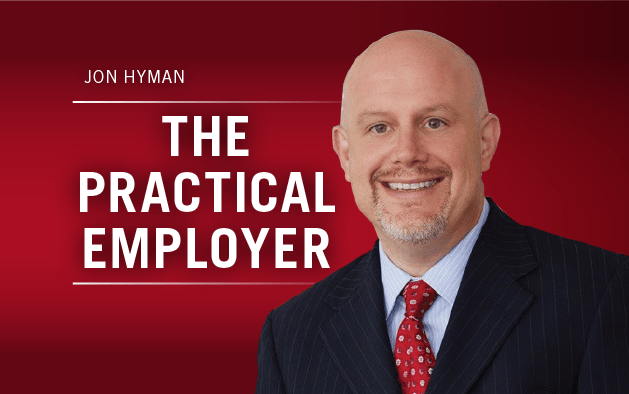Absence management programs and policies are increasingly significant for organizations, especially as more leave laws pass on a local, state and federal level. Managers dealing with absences from their staff must know what their company’s absence program means for their own role and responsibilities.
Creating an absence program or policy can be complicated, and there are several types of leave that must work with each other. For example, how does a company’s paid time off policy align with paid family leave laws, short-term disability plans or the Family and Medical Leave Act? What if employees are using PTO when they should be using short-term disability?
Here is some guidance for employers who want to put something more formal in place and stay up-to-date on changing leave laws.
Creating a strong foundation
The foundation of any absence management program is that it takes into account all the local, state and federal leave laws that an organization must follow. Before a company decides what it wants to do, it must understand what it has to do, said Maura McLaughlin, partner with law firm Morgan, Brown & Joy, LLP. Different laws may have different employee count thresholds, for example.
There are many types of leave, and as new leave laws come into effect, organizations should look at their current policies in case an update is necessary, McLaughlin said.
Staying up to date with new laws can be done a few different ways, said Simon Camaj, absence and disability practice leader at Mercer. A company can outsource management to a carrier/vendor whose job it is to stay informed on the leave law landscape. A company could potentially rely on three parties together — a vendor partner, a consultant partner and in-house counsel — to make the best decisions. Meanwhile, if a company keeps decisions internal and relies on its in-house counsel, that’s more burden on the attorneys.
It’s up to a company to make the best decision for themselves, but there are costs and benefits either way.
From must-haves to nice-to-haves
The next step is deciding how your company wants to address those areas where the law offers organizations some discretion or flexibility, McLaughlin said. How will the company decide on accruals for paid sick leave — lump sum or hours worked? Does the company want to make a certain type of leave paid rather than unpaid? What else does the company want to offer?
These decisions depend on the culture of the organization and what resources it has, McLaughlin said. What is common to see in the absence program or policy of many companies, though, is longer bereavement leave than the law requires and paid parental leave in states where it is not required.
Documentation and communication
What an organization also must consider is how it will document the necessary information for its records and communicate to employees what forms or notices they must fill out for different types of leave.
The onboarding process is one area where employees may be informed about their company’s absence management policies, McLaughlin said. Here they can learn who they go to when they must take time off or some type of leave — their manager, HR or someone else? They can also learn the correct modes of communication to reach out to that person, whether that’s a phone call, email or something else.
Manager training
Finally, McLaughlin said, organizations can train managers and HR professionals to make sure they know what signs to take notice of that may signal a potential upcoming absence. Is an employee exhibiting some behavior that may predict that this person may be eligible for FMLA leave? For example, an employee may say something along the lines of, “I was in the hospital overnight” or “I need to be on bedrest for just a few days.” While these might not lead to any prolonged absence, if they do managers can be prepared, having considered the employee’s absence or potential reasonable accommodations beforehand.
This training can also stress that managers cannot retaliate against employees and teach managers how to handle an absence in a non-discriminatory way. A major absence management challenge is managers being able to manage employees consistently so it doesn’t look like discrimination, McLaughlin said.
How this type of training is conducted depends on what internal resources an organization has, McLaughlin said. It can come from an internal training function or from external training. Either way, there can be a baseline training session along with refreshers as laws or company policies evolve.
The significance of absence management
An absence program is vital to an organization. Managers don’t want to fall into the mistake of not managing this until it’s too late, McLaughlin said.
“You may have [an employee] who has not been held accountable, and now you’re at a point of it just being a real problem from an operations and business perspective. But you have no documentation of the fact that it’s been a problem or that you’ve given them all the leave they’re entitled to. And now you have a problem that could have been [avoided,]” she said.




 What about employees who you discover gathered in mass to protest George Floyd’s murder and racial injustice? There are
What about employees who you discover gathered in mass to protest George Floyd’s murder and racial injustice? There are 
 In 2020, 21 states and many localities — including 20 in California alone — will be impacted by minimum wage increase, the report noted.
In 2020, 21 states and many localities — including 20 in California alone — will be impacted by minimum wage increase, the report noted. 
 One of the questions that clients ask me most often is, “________ is out on a medical/pregnancy leave (or just returned); can we fire him/her?”
One of the questions that clients ask me most often is, “________ is out on a medical/pregnancy leave (or just returned); can we fire him/her?”